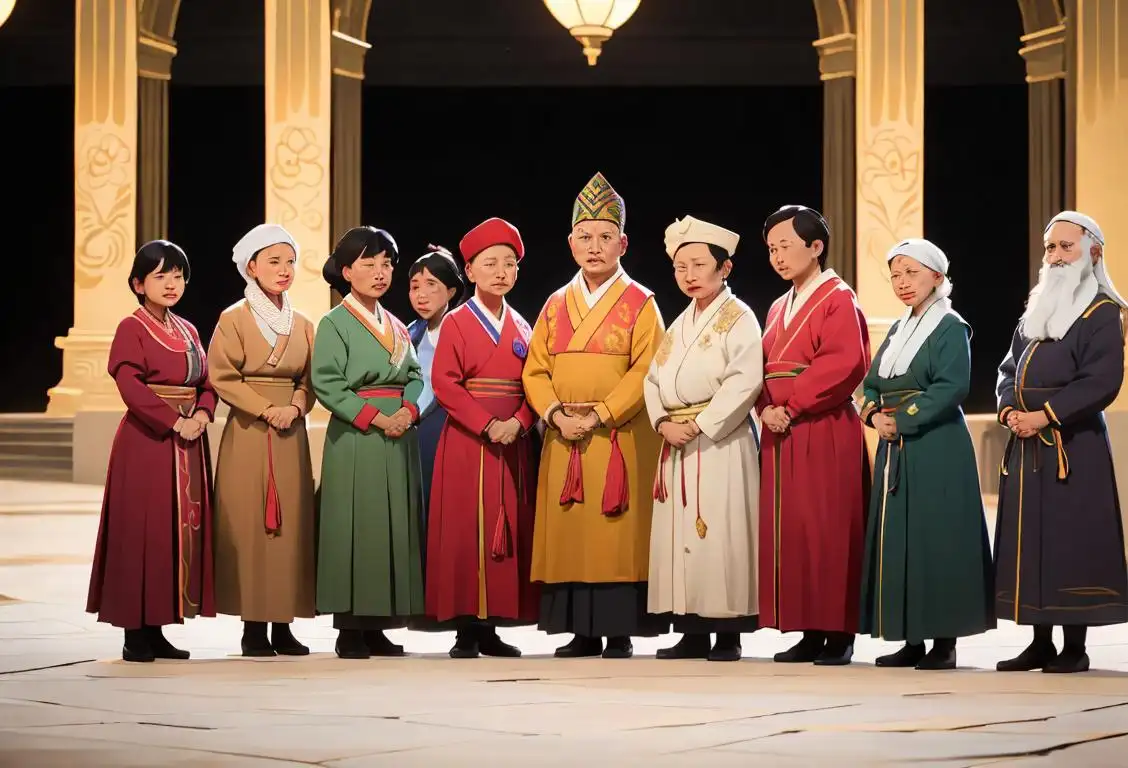National United Nations Day

Hey there, fellow history enthusiasts! Get ready to embark on a wild journey as we dive into the captivating world of National United Nations Day. This special day offers us a chance to celebrate the remarkable impact the United Nations has had on our planet. So buckle up, and let's explore the fascinating internet history of this global festivity!
When is United Nations Day?
It's national united nations day on the 24th October.
The Birth of National United Nations Day
Every year on October 24th, people from around the world come together to recognize and honor the United Nations. But how did this magnificent day come to be? Let's rewind the clock and dig into the intriguing backstory. Way back in 1948, the United Nations General Assembly declared October 24th as United Nations Day, a day to commemorate the founding of the organization.
Now, you might be wondering about the significance of this date. On October 24th, 1945, the United Nations Charter, which established the organization, officially came into effect. So, in essence, National United Nations Day symbolizes the birth of the United Nations and the ideals it represents.
Why Celebrate National United Nations Day?
National United Nations Day is a time for us to reflect upon the incredible efforts of the United Nations in promoting peace, human rights, and sustainable development worldwide. It's a day to appreciate the tireless work of the UN in addressing global challenges and fostering international cooperation.
By celebrating this day, we acknowledge the value of unity among nations and the power of collective action. It's a reminder that, despite our differences, we are all part of a single global community striving for a better future.
A Fun Fact You Won't Believe!
Did you know that the United Nations Sports for Climate Action Initiative encourages sports organizations to take action against climate change? That's right! Not only does the United Nations work on important international policies, but they also tackle issues related to sports. Talk about a multifaceted organization, right?
History behind the term 'United Nations'
1942
The Atlantic Charter
In 1942, during World War II, the term 'united nations' was first used in the Declaration by United Nations. This declaration was signed by 26 countries that were part of the Allied forces. It was a pledge by these nations to continue fighting together against the Axis powers to maintain peace and security after the war.
1945
San Francisco Conference
In 1945, representatives of 50 countries gathered in San Francisco to create an organization that would promote international cooperation and prevent future conflicts. This conference, known as the United Nations Conference on International Organization, resulted in the creation of the United Nations. The term 'united nations' was officially adopted as the name for this new international organization.
1945
The United Nations Charter
On June 26, 1945, the United Nations Charter was signed by 50 countries. The Charter outlined the purposes and principles of the United Nations and established its structure and functions. It emphasized the promotion of peace, respect for human rights, and cooperation among nations. The United Nations became operational on October 24, 1945, after the Charter was ratified by the majority of its founding members.
1945
The First General Assembly
The first meeting of the United Nations General Assembly took place on January 10, 1946, in London, United Kingdom. Delegates from 51 member states gathered to discuss various global issues and set the agenda for the organization. The General Assembly remains the main deliberative, policymaking, and representative organ of the United Nations, where all member states have equal representation.
1945
Permanent Members of the Security Council
The United Nations Security Council is one of the main organs responsible for maintaining international peace and security. The five permanent members of the Security Council, also known as the P5, were established in the United Nations Charter. These members are China, France, Russia (formerly the Soviet Union), the United Kingdom, and the United States. Each permanent member has the power to veto resolutions, making them influential actors in the international political landscape.
2000
Millennium Development Goals
In the year 2000, the United Nations launched the Millennium Development Goals (MDGs), a set of eight targets aimed at reducing poverty, promoting education, improving healthcare, and addressing other global challenges by the year 2015. These goals served as a global blueprint for development and garnered significant international attention and support.
2015
Sustainable Development Goals
Building upon the success of the MDGs, the United Nations adopted the Sustainable Development Goals (SDGs) in 2015. The SDGs consist of 17 interconnected goals and 169 targets designed to tackle various social, economic, and environmental issues. They aim to achieve a more sustainable and inclusive world by 2030, addressing challenges such as climate change, poverty, inequality, and gender discrimination.
Did you know?
The United Nations Sports for Climate Action Initiative encourages sports organizations to take action against climate change.Tagged
awareness funFirst identified
24th October 2016Most mentioned on
24th October 2016Total mentions
8Other days
Nurses Day
Former Prisoner Of War Recognition Day
Press Day
Handloom Day
Heroes Day
Memorial Day
Dance Day
Bestfriends Day
Liberation Day
Love Your Pet Day









